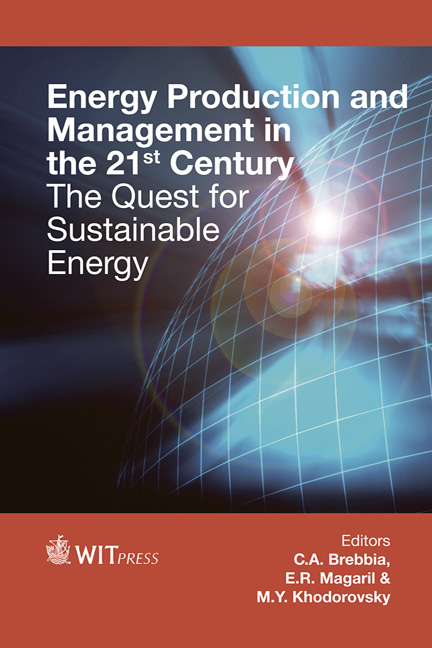Aqueous Vapour Substitution For Hydrogen In The Process Of Pyrolysis
Price
Free (open access)
Transaction
Volume
190
Pages
6
Page Range
855 - 860
Published
2014
Size
312 kb
Paper DOI
10.2495/EQ140792
Copyright
WIT Press
Author(s)
M. Demidenko, R. Magaril & Е. Magaril
Abstract
In order to decrease hydrocarbons fractional pressure in the process of ethylene pyrolysis, 0.5–1.5 kilograms of aqueous vapour is added to each kilo of feedstock. In the pyrolysis of hydrocarbon feed, a considerable part of the process’ power consumption is connected with water vaporization; heating up of the diluent to 800°С and more with the subsequent condensation. The aim of this work is to reduce specific energy consumption and improve selectivity to ethylene of pyrolysis process. The same hydrocarbons fractional pressure can be created as during diluting by aqueous vapour if we use hydrogen as a diluent with its mass 9 times less. It was found that if hydrogen is purged to the furnace inlet under different feedstock temperatures prior to the pyrolitic reaction, hydrogen will become a homogeneous catalyst for the subsequent radical-chain reactions. The depth of the reaction (according to Korzun and Magaril in Thermal processes of refining 2008) will be greater, under otherwise equal conditions, than without hydrogen. Specific heat energy consumption for the production of ethylene, as well as for the amount of ethylene and propylene, with aqueous vapour substitution to hydrogen decreases. When replacing the vapour for a considerably smaller amount of hydrogen, the latter is involved in a radical chain process, providing greater selectivity for ethylene production, thereby increasing the yield of ethylene at 15% relative. As a result, ethylene production costs are significantly reduced. Keywords: pyrolysis, homogeneous catalysis, process selectivity, energy cost reduction, ethylene.
Keywords
pyrolysis, homogeneous catalysis, process selectivity, energy costreduction, ethylene.





